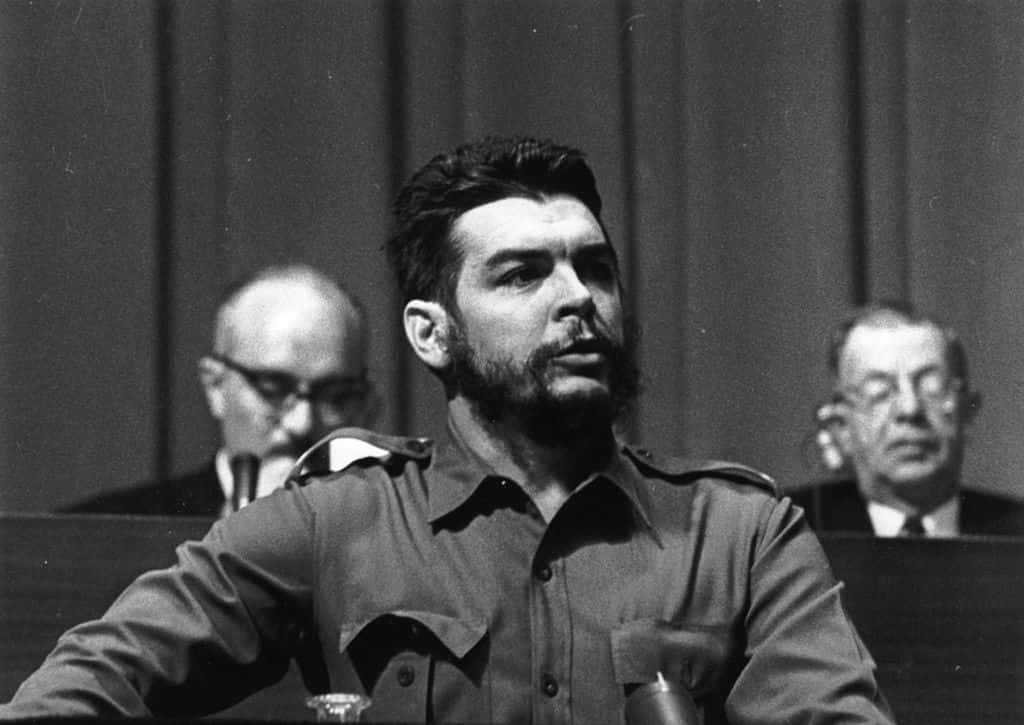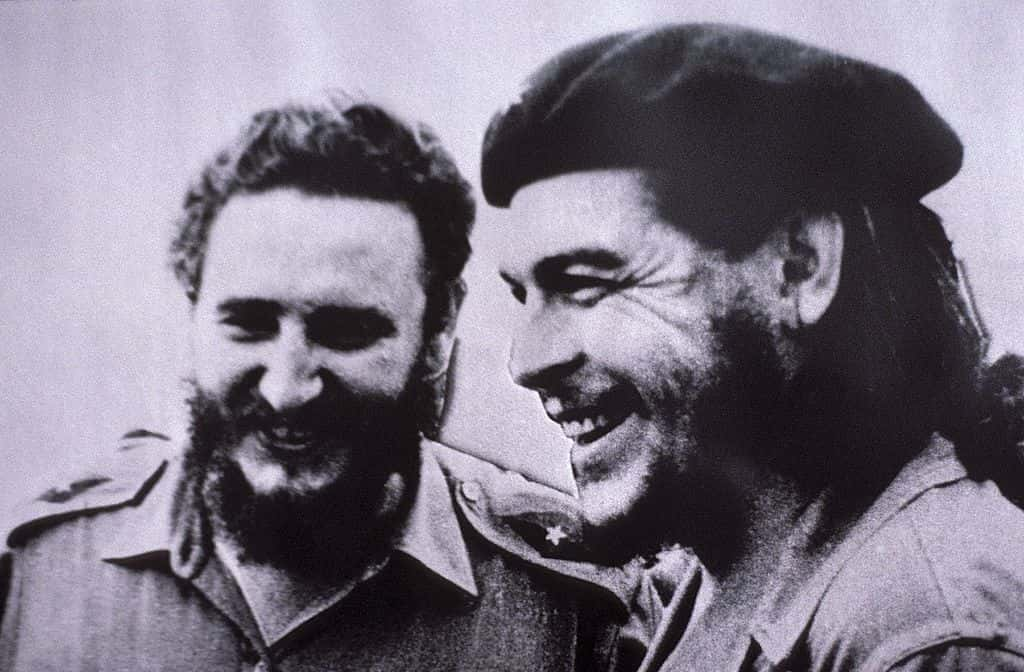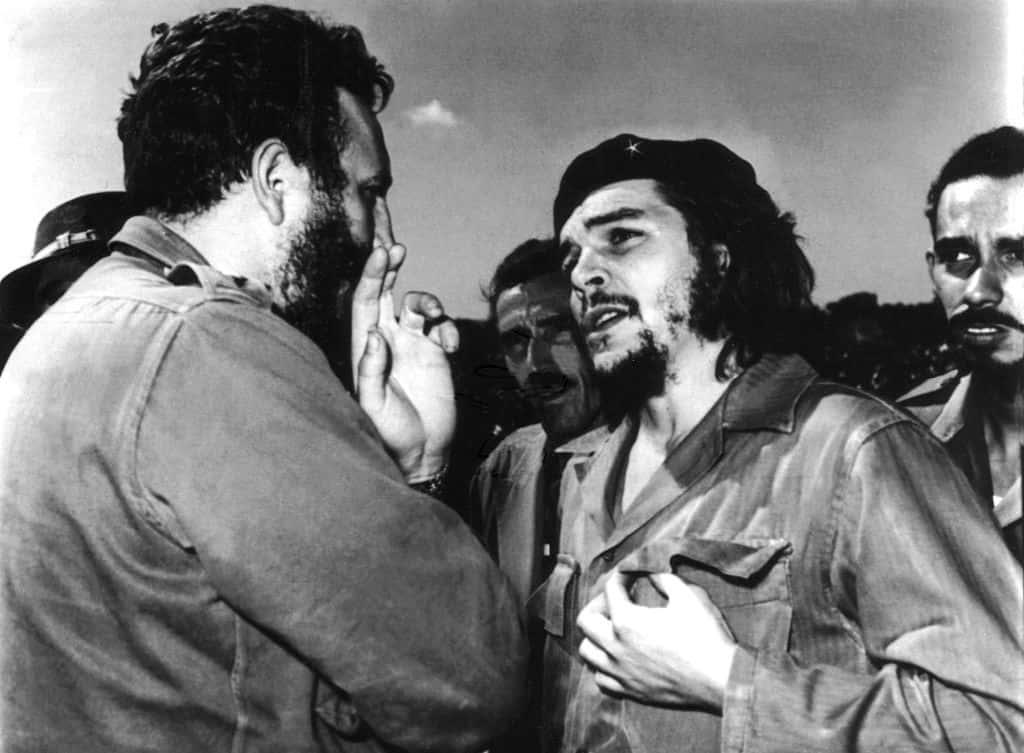"What are our primary goals? Our greatest goals? The great lines we must follow? From the political point of view, the first thing we want is to be masters of our own destiny, a country free from foreign interference, a country that seeks out its own system of development".
In the 20th century, few men have ever gained as mixed of a legacy as Ernesto “Che” Guevara. While many see him as a symbol of a passionate revolutionary who fought against greed to protect the common people, others see him as a ruthless murderer who is unworthy of any admiration or positive remembrance. Even today, portrayals of Guevara prompt intense discussion with hard-lined opinions drawn opposite each other. With that in mind, and in the hope that this will introduce the facts around Guevara, here are 43 things we found out about this mysterious, polarizing figure.
1. Guevara MD
Before he ever became a face for the Cuban Revolution, Guevara became a qualified doctor! He spent years studying medicine at the University of Buenos Aires. He later traveled to Mexico City and delivered lectures in his field at National Autonomous University of Mexico. No word on if he walked with a cane while doing it, though.

2. Everyone has Their Own Inspirations
According to his first wife, Guevara was obsessed with the poverty he witnessed all around him, and deeply wished to make the world better for them. One particular person who tugged at Guevara’s heartstrings was a poor, elderly washerwoman who was one of his patients. He apparently said that she was “representative of the most forgotten and exploited class". He even wrote a poem dedicated to this washerwoman, promising to make a better world for people like her. You can decide for yourself on how successful he was in doing so.
3. The Library’s Best Friend
One of Guevara’s first passions was reading. His family owned thousands of books, which only fueled his knowledge. He memorized poems by Rudyard Kipling and José Hernández, and he spent his early life reading books by such diverse authors as William Faulkner, Karl Marx, Jules Verne, Emilio Salgari, Robert Frost, Jorge Icaza, and Franz Kafka.
 Getty Images
Getty Images
4. A Cuban Hero?
Despite the world first taking notice of him during the Cuban Revolution, Guevara wasn’t Cuban by birth. Guevara was born in Argentina into a middle-class family with Spanish and Irish background. That’s a long way from Cuba!
5. Can’t Hold Me Back
Guevara suffered from acute asthma his entire life. Of course, he didn’t let that stop him from becoming an experienced athlete in football, golf, rugby, and swimming. For our part, it makes for an interesting image thinking of Guevara helping Fidel Castro overthrow the Cuban government while also keeping an inhaler on hand just in case!
6. Like Father Like Son
Guevara’s family was famously left-wing in their political beliefs. He was raised to have a great amount of empathy for the suffering of poor people in the world, while his father hosted many Republican veterans of the Spanish Civil War in the family home (the Republican side at this time was actually the left-wing faction, just roll with it).
7. The Start of a Beautiful Friendship
While Guevara was living in Mexico City in 1955, he was introduced to a man named Fidel Castro. Castro was building an organization called the 26th of July Movement, which would take on Fulgencio Batista’s dictatorship of Cuba and bring power back to the people. Guevara reportedly declared that this was a cause he’d been waiting for and joined in the revolution.
 Wikimedia.Commons
Wikimedia.Commons
8. Revolutionary Banker
Guevara is still hailed as a hero in Cuba, where his face is on the three-peso banknote. Surprisingly, two of the positions he held in Cuba during his lifetime were the Finance Minister and head of the National Bank of Cuba! The man had a variety of skills, what can we say?
9. It Can Only Get Worse from Here
The Cuban Revolution’s first strike occurred on the 25th of November 1956. Castro, Guevara, and 80 other men embarked in an old cabin cruiser named the Granma to Cuba from Mexico. When they landed on the island, forces loyal to the Batista regime immediately besieged them. Only 22 of the revolutionaries managed to escape the attack and reunite elsewhere. Not exactly a promising start…


History's most fascinating stories and darkest secrets, delivered to your inbox daily.
10. From Healer to Killer
As disastrous as that first attack was, it did see one moment which proved to be a symbolic change for Guevara’s destiny. In the confusion of the attack, Guevara allegedly dropped a box containing medical supplies, and instead picked up a box of ammo. People have had a field day with this moment in their attempts to explain Guevara’s diverse and highly contrasting character. However, a man’s life can’t always be summed up in one moment, as Guevara certainly proved.
11. Suffering for Liberty
Guevara and the other 21 survivors of the raid hid out in Cuba's Sierra Maestra mountains for a long time, supported by locals as they hid from capture. During this time, Guevara found out that he was allergic to mosquito bites when he developed cysts on his body that were the size of walnuts! He later characterized this time period “the most painful days of the war". We believe you, Che.
12. Work for Work’s Sake!
Although Guevara had great military successes, his record of helping to run Cuba was decidedly much more mixed. He organized a series of economic plans focused on moral incentives. Quotas had to be met, with Guevara refusing to give pay raises for extra work, as he wanted to get people to stop valuing money so much. However, this led to a drop in production. Turns out it was harder to get people weaned off of money than Guevara hoped.
 Wikipedia
Wikipedia
13. Rest is for the Departed
For what it’s worth, Guevara fervently believed in working for moral reasons rather than for monetary gain and would often lead by example. Aside from his ministry work, Guevara also voluntarily worked in construction and even cut sugar cane. He was said to have worked for 36 hours straight on some occasions!
14. Check Mate
Chess was one of Guevara's lesser known passions. The young Guevara even participated in tournaments, displaying a rare talent for the game. This sense of strategy later came to great use when he joined the revolution.
15. Building a Movement
While he was hiding out in the Sierra Maestra mountains, Guevara sought to make things better for the subsistence farmers who lived there in complete poverty. Guevara organized classes to teach reading and writing, he set up a health clinic, and also ran a workshop to instruct the rebels on combat tactics. We’re thinking that Guevara was the kind of man who would both wear a peace symbol and write “Born to Kill” on his hat.

16. Railing Against Racism
Representing Cuba on the international stage in 1964, Guevara condemned the United Nations for supporting apartheid. In an hour-long speech, Guevara denounced the UN’s refusal to confront apartheid in South Africa, and he also criticized the US for the way that they treated their black population, seeing it as further proof that imperialism and capitalism had to be opposed. To be fair, he did have some good points.

17. Is There a Difference?
During his time in New York, Guevara’s life was threatened twice by Cuban exiles who despised the Castro regime. One attempt was by Molly Gonzales, who tried to break through the UN barricades while armed with a hunting bowie. The other attempt was committed by Guillermo Novo, who fired a bazooka missile at the UN Headquarters from a boat (he missed). Though Guevara wasn't aware of these attempts until later, he merely commented “it is better to be killed by a woman with a knife than a man with a gun".
18. Bro, Don’t Do It
When Guevara traveled to the Congo in 1965 to offer his assistance to the rebels there, Egyptian leader Gamal Abdel Nasser foreshadowed that his expedition would end in failure. Despite his friendliness with Guevara, Nasser urged him not to go to the Congo, warning that he would become an unsuccessful Tarzan stereotype. We’re now left picturing Che Guevara yodeling while swinging on vines through the jungle…

19. Out of Africa
Despite his efforts to spread Marxism and export the revolution to Africa, Guevara found his efforts frustrated by the severe division amongst the Congolese rebels. Not only that, white mercenary forces of the Congo National Army, backed by anti-Castro Cubans and the CIA, proved too much of a match for Guevara. Eventually, he concluded that there was “no will to fight” and cut his losses by leaving Congo.
20. Capitalism’s Revenge
Guevara has become famous for his face being on t-shirts that I guarantee at least one of your friends wore during college. There was a time when you couldn’t go into five indie clothing stores without Guevara being on display in at least one of them. However, Guevara himself would have been livid if he could see how commercialized his image had become. It played into nearly everything which disgusted him about capitalism! That’s what you get for being photogenic, we suppose.
21. The M-Word
Contrary to popular belief, Guevara did not identify as Communist. When he was asked about the Cuban ideology in 1960, Guevara replied that he identified the revolution as Marxist rather than Communist. Marxism, for Guevara, was so obviously a good thing that he felt people “ought to be Marxist with the same naturalness with which one is 'Newtonian' in physics, or 'Pasteurian' in biology".
22. Guevara the Guerrilla
In 1958, Guevara played a huge role in taking Cuba from the Batista regime. He drove a column of troopers on a seven-week march, mostly traveling by night to avoid surprise attacks by the enemy. Reportedly, he would go several days without eating during the campaign. In just a matter of days, Guevara seized control of almost the entire Cuban province of Las Villas. This only left the province’s capital city, Santa Clara.

23. He Did What?!
The Battle of Santa Clara remains one of Guevara’s greatest strategic achievements. He and his comrades numbered 340 against a force of 3,900 combatants, supported by ten tanks and an armored train! Guevara commandeered tractors to disrupt the railway line, causing the train to derail. Then he and the others helped themselves to the weaponry aboard the train, even as their march on the city was cheered by crowds of peasants. After fierce fighting, the city’s demoralized garrisons surrendered to Guevara’s forces. Twelve hours after the city was taken, Fulgencio Batista fled Cuba.
24. Che! Che, it’s Me! How You Doing, Che?
Some people might be wondering why Ernesto Guevara is mostly known as “Che". The answer is far more mundane than you think. In Argentina, “che” is a filler word that could mean a variety of things. It can be used to get someone’s attention (“Hey!”), it can be a term of endearment for someone (“bud!”) or it could just be a noise (“Err” or “Um”). Guevara said the word in his speech so much that it became his nickname.
25. Forward-Thinking Fellow
As Castro and his followers took charge of Cuba, Guevara found a lot of things that needed to change on the island. He blamed outdated attitudes towards women, race, and individualism on the history of capitalism. He urged the Cuban population to embrace a new set of ideals based on gender-blindness, non-materialism, anti-imperialism, and egalitarianism. You can see why the US hated this man so much!
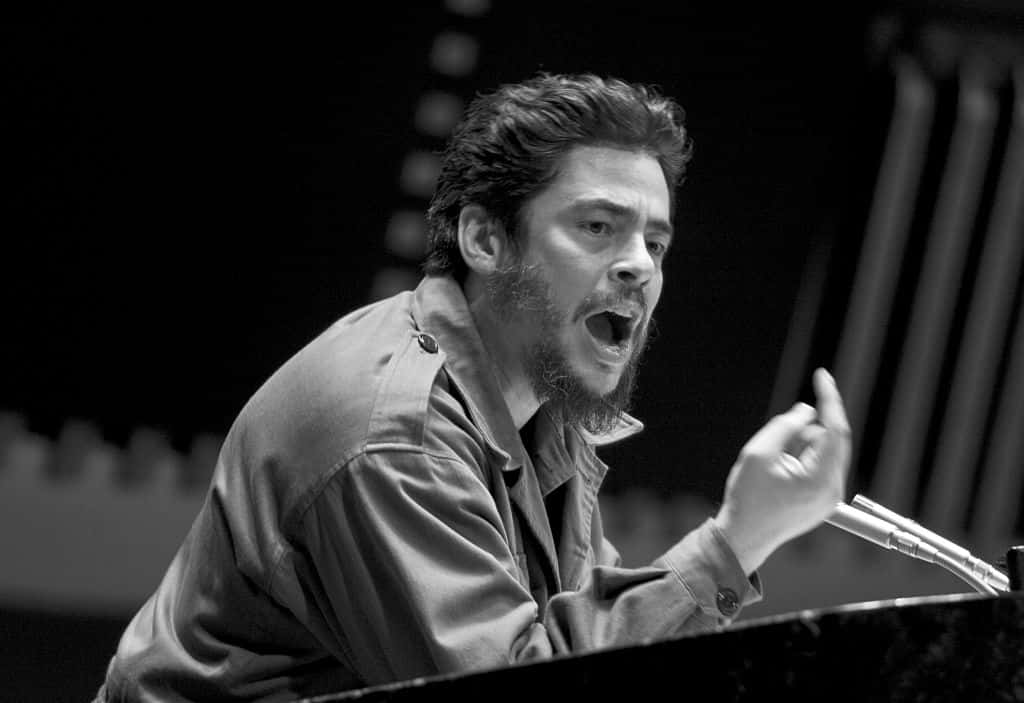 Getty Images ctor Benicio Del Toro as Argentine Marxist revolutionary Ernesto 'Che' Guevara in the movie "Che"
Getty Images ctor Benicio Del Toro as Argentine Marxist revolutionary Ernesto 'Che' Guevara in the movie "Che"
26. Tania the Guerrilla
Despite Guevara’s advocacy for gender-blindness, only one woman fought alongside him and the other Marxist guerrillas in Bolivia. Her name was Tamara Bunke (also known as Tania), and she met Guevara when she was tasked to be his translator while he visited East Germany in 1960. Guevara was a hero of hers, so she followed him back to Cuba in 1961. Her efficiency and positive attitude meant that she quickly rose in the ranks of the Cuban government. In October 1964, she followed Guevara to Bolivia, serving with the other guerrillas until she was slain in an ambush. Fidel Castro declared her to have been a hero of the revolution, and her body was eventually found, exhumed, and brought to Cuba where it was buried in the Che Guevara Mausoleum.
27. That Wasn’t Me
Contrary to popular belief, Guevara played almost no part in repelling the Bay of Pigs invasion. Guevara had actually been lured away to the west coast of Cuba in an effort to create a distraction for the invasion to work. Of course, even without Guevara present, Castro’s Cubans had no trouble turning away the American backed insurgents.
 Getty Images
Getty Images
28. Maybe Also Get That Guy While You’re At It?
When Guevara was in Bolivia, the CIA aided the Bolivian government in their efforts to capture the infamous revolutionary. According to the documentary My Enemy’s Enemy, the Bolivian government was also advised by Nazi crook Klaus Barbie in the hunt for Guevara. Belying his name, Barbie was actually a terrifying man, having been known as the Butcher of Lyon. That’s right; the CIA hated Guevara so much, they worked with a legitimate fugitive from justice to get him!

29. Disgusted by Classism to the Very End
When Guevara was captured by Bolivian government forces, he was bound and taken to a run-down schoolhouse made of mud as a temporary prison. Despite the fact that he was starving, sick, and had been shot in the leg, Guevara reportedly only asked for something to smoke, thanking the Bolivian soldier who offered him nicotine out of pity. He also had a short conversation with the local schoolteacher, Julia Cortez, pointing out how disgusting it was that children were educated in such squalid conditions while government officials drove around in Mercedes.
 Getty Images Che Guevara illustration
Getty Images Che Guevara illustration
30. Last Words
In February 1965, he made his last appearance on the international stage, making a powerful speech in Algiers, before dropping off the map. Nobody knew where he’d gone until, perhaps due to the pressure of providing an answer, Fidel Castro revealed a farewell letter from Guevara in October 1965. In the letter, Guevara declared that he was going to spread the revolution around the world, giving up all offices he held in Cuba (as well as his honorary Cuban citizenship) as a result. However, Castro was premature in reading out the letter; Guevara had only meant to have it read at the time of his demise, which made it awkward when he was still alive and had failed to revolutionize the Congo. Publicly going back to Cuba felt too awkward, so Guevara laid low in Europe after his Congolese journey. Before he went to Bolivia, though, he did sneak back to Cuba to visit Castro, as well as his second wife, one last time. He left a letter for his five children to read in case of his demise, which finished with one simple instruction: “Above all, always be capable of feeling deeply any injustice committed against anyone, anywhere in the world. This is the most beautiful quality in a revolutionary".
31. Those Soviets Let Us Down!
Although Guevara had been instrumental in Cuban-Soviet relations being developed (which led to the Cuban Missile Crisis), he later expressed his disappointment in the Soviet Union. He accused the Soviet of having “forgotten Marx” and even predicted that they would return to capitalism. In this, he turned out to be right, though we doubt his ghost would take much comfort in that.
 Wikipedia
Wikipedia
32. Green and Possibly Proud of It
Guevara’s father liked to claim that “the blood of Irish rebels” flowed in his son’s veins as an explanation for Guevara’s life choices. Among the many nations which Guevara visited while working in the Cuban government, he paid a visit to Ireland. Writing to his father, he declared "I am in this green Ireland of your ancestors. When they found out, the television [station] came to ask me about the Lynch genealogy, but in case they were horse thieves or something like that, I didn't say much". We’re sure his dad had a good laugh over that.
33. The Argentinian Pilgrim
In between his medical studies, Guevara took two long motorcycle trips which shaped the rest of his life. The first one was a 2,800-mile journey through Argentina’s countryside, which he completed in 1950. Though we use the term "motorcycle" loosely, because what he rode on was basically just a bicycle with a small engine installed on it by Guevara himself!
34. Why do I Suddenly Look Like Gael García Bernal?
The second, far more ambitious trip that Guevara undertook required him to take a year off of medical school just so he could complete it. Together with his friend, the Argentinian biochemist Alberto Granada, Guevara rode his motorcycle (an actual one this time) on a journey of 5,000 miles across part of South America, a journey which took nine months to finish. He even managed to keep a diary going while he traveled, and his personal notes would later get made into a celebrated memoir, The Motorcycle Diaries, which would later be adapted into a film by Walter Salles.
35. Listen to the People
One of the main observations that stuck with Guevara on these massive road trips was the extreme poverty which he witnessed throughout South America. Peasants scraped by with almost nothing, farming land owned by wealthy, exploitative landlords. Guevara became convinced that Latin America’s problems transcended borders, and he believed that the entire continent should come together to fight the good fight together rather than become divided by capitalism and nationalism.

36. Blood for Blood
The Batista regime was reported to have been responsible for thousands of deaths and people being tortured over the years, which made them highly unpopular with the lower classes. Upon Castro and Guevara’s victory in the Cuban Revolution, a tribunal was set up with Guevara in charge of La Cabana Fortress, exacting “revolutionary justice” on those accused of being traitors, Batista supporters, or war criminals. There is no clear evidence as to how many people were executed during these tribunals, but the numbers range from 55 to several hundred. Regardless, the newly liberated Cuban population displayed a 93% approval rating of the tribunals, leading some to observe that a “lynching mood” was in the air no matter what Che Guevara and Castro decided to do.
37. Judge, Jury, and Executioner
There is much debate on Guevara’s actions during the tribunals held in La Cabana. Some historians maintain that Guevara tried to spare people from the firing squads, while others claim that Guevara took joy in the bloodshed. Guevara made his position somewhat clearer in a letter he wrote in 1959 to Luis Paredes Lopez in Buenos Aires, in which he declared that "The executions by firing squads are not only a necessity for the people of Cuba, but also an imposition of the people". Well then…
 Getty Images
Getty Images
38. Disarmed at Last
After Guevara’s execution, the Bolivian army cut off his hands as proof that they’d dispatched him. They were preserved in formaldehyde and sent to Argentina for identification (his fingerprints were already on record in Argentina). Eventually, the hands were sent to Cuba, where Fidel Castro had proclaimed three days of mourning in the wake of Guevara’s demise.
39. Where’s Che?
The rest of his body was taken away, with no indication as to whether it had been buried or cremated. In the 1990s, a year-long search for his remains unearthed him in a mass grave with six other bodies. When Guevara was identified by his teeth (as well as the small nicotine pouch that one of the Bolivian troopers had given him), he and his fellow grave-neighbors were sent back to Cuba and given full military burials in Santa Clara, the site of Guevara’s great victory.
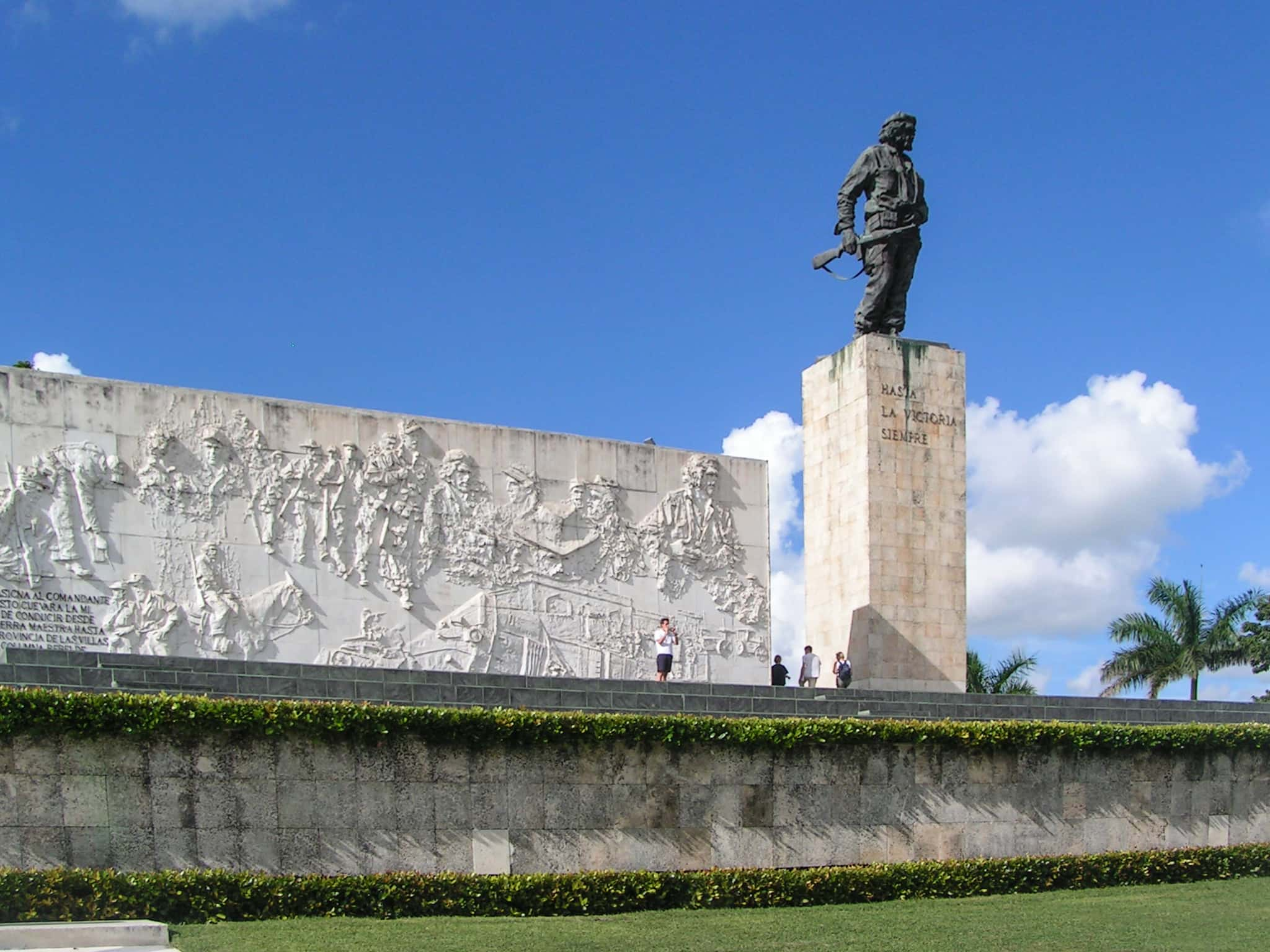 Wikipedia
Wikipedia
40. Killer Instinct
Having turned to revolution and battle to change the world, Guevara was never afraid to use brutal force against his enemies. When he and Castro were hiding out in the Sierra Maestra mountains, Guevara was known to execute deserters or men suspected of being spies. In a famous incident, Guevara described a time when a man named Eutimio Guerra confessed that he’d taken money to reveal the location of the rebels, leading to the Batista regime destroying farms of those loyal to Castro and his movement. Guevara recorded in great detail how he personally executed Guerra seemingly without any remorse for having to commit such an act. This detachment to bloodshed in his diaries has often been used by Guevara’s detractors to paint him as a sociopathic killer.
41. They Call Me Mr. Pig!!!
Fighting for a revolution and being a fugitive from governments doesn’t give someone much time to maintain their hygiene. Guevara also disdained washing because he felt that cold water made his asthma even worse. As a result, one nickname he got was "El Chancho," which translates to "The Pig". Safe to say it’s a good thing that "Che" stuck around, but maybe that’s because nobody was going to call him "El Chancho" to his face.
42. Get Our Story Straight: He Shot First
Despite a desire by the US to take Guevara alive and interrogate him, the Bolivian government ordered Guevara’s immediate execution to avoid him escaping captivity. They instructed Guevara’s executioner, Mario Teran, to shoot him in line with what the government would later tell the public, that he’d went out fighting rather than being executed as a prisoner. Guess it wasn’t as glorious to brag about slaying a man who was tied up.
43. Defiant Till The End
Just before he was executed, Guevara was asked about other rebels in the area, but he refused to answer. When Mario Teran approached him, Guevara was said to have stood up and declared “I know you've come to kill me. Shoot, coward! You are only going to kill a man!" Teran shot him nine times in the arms, legs, and chest, all while Guevara reportedly bit into one of his wrists to avoid screaming.


